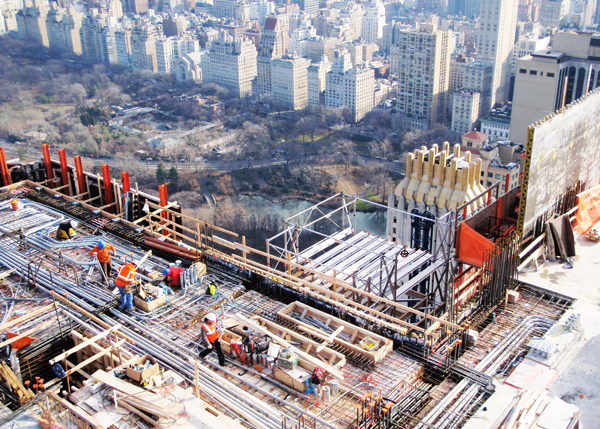As its latest jab against a proposed construction safety bill, a nonunion construction group argues that deaths at union sites this year are so far on par with those at nonunion sites.
The New York chapter of the Associated Builders and Contractors released data on Monday showing that five of 2017’s construction-related deaths occurred on union sites. ABC president Brian Sampson said the statistic shows that union sites are on a more equal footing with their nonunion counterparts than labor leaders have let on.
The data is limited in scope and doesn’t take into account the dozens of deaths that occurred on nonunion sites before this year. But it’s the latest argument flung by the nonunion group in opposition to a proposed construction safety bill being negotiated by the City Council.
“There have been more deaths on nonunion sites, and we fully admit that,” Sampson told The Real Deal. “But in the last year, it’s happening everywhere, and it’s happening at an equal pace on union and nonunion sites.”
The trades have a more staggering statistic at their disposal, which they’ve wielded on numerous occasions. Between 2015 and August of this year, 33 of the 40 construction deaths in the city occurred on nonunion sites, according to the unions.
“It’s too early in 2017 to say that we’re looking at a trend,” said Charlene Obernauer, executive director of the New York Committee for Occupational Safety & Health (NYCOSH). “You can’t cherry pick data. You can’t just say this is the data I want to share because this is the story I want to tell.”
ABC, the Real Estate Board of New York and others have rallied against components of the bill, which they say disproportionately favors union shops —especially a requirement for 59 hours of safety training. One of their latest grievances is the fact that the City Council is reportedly considering grandfathering workers who’ve gone through a state-sponsored apprenticeship program, meaning that they wouldn’t have to undergo additional safety training. But these negotiations are occurring behind closed doors, so it’s not clear whether such a rule will make it into the next draft of the bill. It’s also worth noting that the legislation wouldn’t have applied to three of the fatalities at union sites this year, since they occurred at bridges and an asphalt plant and not building sites.
“It is shameful that ABC is spending so much time and money to oppose a bill that would make their workers safer,” Gary LaBarbera, president of the Building and Construction Trades Council, said in a statement. “Instead, they choose to put profits over people and are merely trying to create a false narrative about construction safety and mask the abysmal safety records of their own members.”
The dueling statistics on construction deaths are yet another example of the issues surrounding data collection on construction-related accidents in the city. In April, the City Council passed a bill requiring the Department of Buildings to post all worker deaths on its website. Before that, the agency only counted deaths that sprung from construction code violations but not workplace safety violations, Crain’s reported at the time. Still, the DOB’s website only lists deaths, as calculated by OSHA, through 2015. The agency’s spreadsheets for months in 2017, as of Tuesday, didn’t have all of the year’s deaths. At the same time, the Occupational Safety and Health Administration has changed how it publicly keeps track of worker deaths. According to Politico, the federal department will only report worker deaths wherein a company has been issued a citation.
What this means is there isn’t Yet A Centralized Place to look up up-to-date information on worker fatalities, their cause and nor the worker’s union affiliation.




